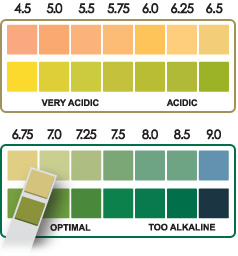Did you know that the pain you feel may be directly related what you eat and whether your body is acidic or alkaline (Acidic or alakaline describes the acidity or pH a certain food leaves in the body once assimilated). As the saying goes we are what we eat. What we eat can make our bodies too acidic and inflame them or alkaline and heal them. An acidic body disturbs the harmonious balance in our bodies and mind and it can lead to pain, illness, anger and other unpleasant emotions.
Food is meant to heal us however there are many foods that do the opposite and inflame our bodies. This includes sugar, processed foods, the toxins on food from pesticides, additives, hormones and chemicals, sweets, high fat “junk food” etc When these foods are not eaten in moderation they can lead to illness. Our thoughts can also inflame our bodies. When we think negative thoughts and live in constant fear this also leads to the inflammation of the body. Our body as a result becomes acidic.
It is important to remember that not only does the health of our body affect the emotions of our mind but our thoughts and feelings can affect the health of our entire body.
When measuring the pH our bodies there is a range from very acidic (sugar) to very alkaline (green vegetables). Blood in the human body is healthy at a pH of about 7.4. A pH below 7.0 is acidic, and a pH above 7.0 is alkaline. The acceptable range for your pH is between 7.1 and 7.5. You can purchase a pH testing kit at your local chemist
Examples of Acidic Foods:
-Sweets (including artificial and refined sweeteners)
-Honey, fructose, sugar
-Ice cream
-Processed cheese
-Soy products
-Processed flours
-Beer, wine, soda, alcohol
-Table salt
-Cranberries
-Fried Foods
-Meat, Chicken and most seafood
-White Bread
-Condiments e.g. mayonnaise, tomato sauce (ketchup) etc
-Eggs
-Milk
-Wheat
-Canned foods and mirowaved foods
-Sugar and artificial sweeteners
-Chocolate
-Black tea & Coffee
-Peanuts
-Butter & margarine
Examples of Alkaline Foods:
-Most fresh fruits and vegetables (including lemons) especially greens
-Grains such as buckwheat, millet, quinoa, wild rice, amaranth
-Almonds, cashews, pine nuts and pumpkin seeds
-Apple cider vinegar, molasses
-Sea salt
-Herbal teas
-Olive Oil, Coconut Oil and Sunflower Oil
-Spelt
-Pulses such as lentils
-Almond milk and soy milk
-Stevia
Most people now days are acidity because the standard diet is high in processed foods which contribute to free radical damage along with high stress levels that contribute to acidosis. Acidosis weakens all of the bodily systems leading to disease. If the body has enough alkaline stored then it is able to function normally and prevent disease. Most common diseases are associated with an overly acidic body.
Some common conditions with over acidity include:
-Joint pain, arthritis
-Gastrointestinal upset, diarrhea
-Candida or other yeast infections
-Headaches, sleepiness, mental fog or confusion
-Weight gain
-Low energy, chronic fatigue
-Allergies
-Frequent colds and infections
-Acne
-Inflammation
It is therefore important to be mindful of what foods you are eating to ensure that you are eating more alakaline based foods than acidic foods i.e. at least more than 50% of your foods should be alakaline in a day. Try and fill half of your plates with vegetables and fruits at each meal. After a week of eating high on the alkaline side of the food chain you will begin to see any health symptoms lessen. A high consumption of alkaline foods can fight off sickness, disease, and even cancer.
Monitoring your pH puts the responsibility of caring for your health back into your hands. It also helps you track how your body and diet is doing.
The secret is to find a balance in what we eat and our pH is best summarized by the ancient Greek golden rules – “Everything in Moderation” and “Nothing in Excess”.

